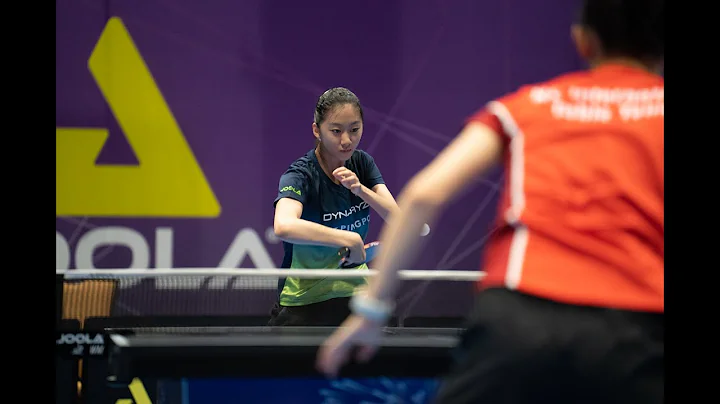Hong Yunyu C Lin
age ~63
from Vancouver, WA
- Also known as:
-
- Hong Yunyu Lin
- Phil Lin
- Ho Ng Lin
- Phil Linc
- Lin H Ong
- Phone and address:
-
3206 SE 173Rd Ct, Vancouver, WA 98683
3602532178
Hong Lin Phones & Addresses
- 3206 SE 173Rd Ct, Vancouver, WA 98683 • 3602532178
- Portland, OR
- 1134 Substation Rd, Brunswick, OH 44212
- 1166 Jefferson St, Medina, OH 44256 • 3307236770
Medicine Doctors

Hong J. Lin
view sourceSpecialties:
Psychiatry
Work:
New London VA Outpatient Clinic
4 Shaws Cv STE 101, New London, CT 06320
8604373611 (phone), 8604371801 (fax)
East Haven Counseling & Community Services
595 Thompson Ave, East Haven, CT 06512
2034683297 (phone), 2034683334 (fax)
VA Connecticut Healthcare System Psychiatry
950 Campbell Ave Blg1 Fl7, New Haven, CT 06516
2039325711 (phone), 2039373886 (fax)
4 Shaws Cv STE 101, New London, CT 06320
8604373611 (phone), 8604371801 (fax)
East Haven Counseling & Community Services
595 Thompson Ave, East Haven, CT 06512
2034683297 (phone), 2034683334 (fax)
VA Connecticut Healthcare System Psychiatry
950 Campbell Ave Blg1 Fl7, New Haven, CT 06516
2039325711 (phone), 2039373886 (fax)
Languages:
English
Spanish
Spanish
Description:
Dr. Lin works in East Haven, CT and 2 other locations and specializes in Psychiatry. Dr. Lin is affiliated with VA Connecticut Healthcare System West Haven Campus and Yale-New Haven Childrens Hospital.

Hong Lin
view sourceSpecialties:
Family Medicine
Education:
Medical Center Of Fudan University (1999)
Name / Title
Company / Classification
Phones & Addresses
L & W STEAKHOUSE, INC
CHASE VILLAGE CORP
W & L STEAK HOUSE INC
President
TAIWAN COOPERATIVE BANK
Director
TECO-WESTINGHOUSE MOTOR COMPANY
Us Patents
-
Method Of Reducing Leakage Using Si3N4 Or Sion Block Dielectric Films
view source -
US Patent:6743669, Jun 1, 2004
-
Filed:Jun 5, 2002
-
Appl. No.:10/164227
-
Inventors:Hong Lin - Vancouver WA
Shiqun Gu - Vancouver WA
Peter McGrath - Portland OR -
Assignee:LSI Logic Corporation - Milpitas CA
-
International Classification:H01L 218234
-
US Classification:438238, 438210, 438382
-
Abstract:A dielectric film block is used in semiconductor processing to protect selected areas of the wafer from silicidation. The selected areas may include resistors. A first layer of oxide is formed on the resistor and a second layer comprising SiON or Si N is disposed on the oxide. A mask is patterned to allow etching to take place in the areas where silicide formation is desired. The oxide layer serves as an etch stop layer during etching of the second layer.
-
High-K Dielectric Birds Beak Optimizations Using In-Situ O2 Plasma Oxidation
view source -
US Patent:6746925, Jun 8, 2004
-
Filed:Mar 25, 2003
-
Appl. No.:10/397451
-
Inventors:Hong Lin - Vancouver WA
Shiqun Gu - Vancouver WA
Wai Lo - Lake Oswego OR
Jim Elmer - Vancouver WA -
Assignee:LSI Logic Corporation - Milpitas CA
-
International Classification:H01L 21336
-
US Classification:438287, 438303, 438595, 438225, 438230, 438504, 438452
-
Abstract:In a method of forming an integrated circuit device, sidewall oxides are formed by plasma oxidation on the patterned gate. This controls encroachment beneath a dielectric layer underlying the patterned gate. The patterned gate is oxidized using in-situ O plasma oxidation. The presence of the sidewall oxides minimizes encroachment under the gate edge.
-
Method And Apparatus For Reducing Microtrenching For Borderless Vias Created In A Dual Damascene Process
view source -
US Patent:6794304, Sep 21, 2004
-
Filed:Jul 31, 2003
-
Appl. No.:10/631528
-
Inventors:Shiqun Gu - Vancouver WA
Masaichi Eda - Gresham OR
Peter McGrath - Portland OR
Hong Lin - Vancouver WA
Jim Elmer - Vancouver WA -
Assignee:LSI Logic Corporation - Milpitas CA
-
International Classification:H01L 21302
-
US Classification:438740, 438742, 438754
-
Abstract:A method of making a semiconductor device includes providing a first element formed of a first substantially electrically conductive material and having an upper surface. A second element adjacent to the first element is provided. The second element is formed of a first substantially non-electrically conductive material. An upper surface of the second element slopes downwardly toward the upper surface of the first element. A first layer of a second substantially non-electrically conductive material is disposed over the upper surface of the first element and the upper surface of the second element. The first layer has a thickness in the vertical direction that is greater in an area over the downward slope of the second element than in an area over the first element. An etching process is performed such that the layer is perforated above the upper surface of the first element and imperforated in the vertically thicker area above the downwardly sloping upper surface of the second element.
-
Plasma Passivation
view source -
US Patent:6806038, Oct 19, 2004
-
Filed:Jul 8, 2002
-
Appl. No.:10/190954
-
Inventors:Shiqun Gu - Vancouver WA
Hong Lin - Vancouver WA
Ryan Tadashi Fujimoto - Gresham OR -
Assignee:LSI Logic Corporation - Milpitas CA
-
International Classification:G03F 700
-
US Classification:430318, 430323, 430322, 430329, 430330, 216 58, 216 63, 216 67, 216 69
-
Abstract:A method for forming a conductive trace on a substrate. The conductive trace is patterned with a photoresist mask and etched, thereby forming a polymer layer on a top surface and sidewalls of the photoresist mask and on sidewalls of the conductive trace. The polymer layer contains entrained chlorine gas. The substrate is heated on a chuck in a reaction chamber. A remote plasma is generated from ammonia gas and oxygen gas. The substrate is contacted with the ammonia and oxygen plasma, thereby withdrawing a substantial portion of the entrained chlorine gas from the polymer layer. A radio frequency potential is applied to the chuck on which the substrate resides, thereby creating a reactive ion etchant from the ammonia and oxygen plasma in the reaction chamber and removing the polymer layer from the top surface of the photoresist mask. The photoresist mask is thus exposed, and then removed in an ashing process.
-
Selective High K Dielectrics Removal
view source -
US Patent:6818516, Nov 16, 2004
-
Filed:Jul 29, 2003
-
Appl. No.:10/629496
-
Inventors:Wai Lo - Lake Oswego OR
Hong Lin - Vancouver WA
Shiqun Gu - Vancouver WA
James R. B. Elmer - Vancouver WA -
Assignee:LSI Logic Corporation - Milpitas CA
-
International Classification:H01L 21336
-
US Classification:438287, 438307
-
Abstract:A method of forming a gate structure in an integrated circuit on a substrate. A high k layer is formed on the substrate, and a gate electrode layer is formed on the high k layer. The gate electrode layer is the patterned. LDD regions are formed using an ion implantation process, thereby creating damaged portions of the high k layer. A first portion of the damaged portions of the high k layer are removed, thereby defining a gate structure, and leaving remaining portions of the damaged portions of the high k layer. Sidewall spacers are formed adjacent the gate structure. Source/drain regions are formed using an ion implantation process, thereby further damaging the remaining portions of the damaged portions of the high k layer. The remaining portions of the damaged portions of the high k layer are then removed.
-
Fabrication Of Trenches With Multiple Depths On The Same Substrate
view source -
US Patent:6864152, Mar 8, 2005
-
Filed:May 20, 2003
-
Appl. No.:10/442533
-
Inventors:Venkatesh P. Gopinath - Fremont CA, US
Hong Lin - Vancouver WA, US
Verne Hornback - Camas WA, US
Dodd Defibaugh - Camas WA, US
Ynhi Le - Gresham OR, US -
Assignee:LSI Logic Corporation - Milpitas CA
-
International Classification:H01L021/76
-
US Classification:438427, 438700, 438703, 438424, 438749, 438750, 438751
-
Abstract:Dual trench depths are achieved on the same wafer by forming an initial trench having a depth corresponding to the difference in final depths of the shallow and deep trenches. A second mask is used to open areas for the deep trenches over the preliminary trenches and for the shallow trenches at additional locations. Etching of the shallow and deep trenches then proceeds simultaneously.
-
Interconnect Dielectric Tuning
view source -
US Patent:7081406, Jul 25, 2006
-
Filed:Aug 10, 2004
-
Appl. No.:10/915719
-
Inventors:Wai Lo - Lake Oswego OR, US
Hong Lin - Vancouver WA, US
Shiqun Gu - Vancouver WA, US
Wilbur G. Catabay - Saratoga CA, US
Zhihai Wang - Sunnyvale CA, US
Wei-Jen Hsia - Saratoga CA, US -
Assignee:LSI Logic Corporation - Milpitas CA
-
International Classification:H01L 21/4763
-
US Classification:438620, 438614, 438669
-
Abstract:An improvement to a method of forming an integrated circuit. An etch stop layer is formed to overlie the front end processing layers of the integrated circuit. Support structures are formed that are disposed so as to support electrically conductive interconnects on various levels of the integrated circuit. Substantially all of the non electrically conductive layers above the etch stop layer that were formed during the fabrication of the interconnects are removed.
-
Fabrication Of Trenches With Multiple Depths On The Same Substrate
view source -
US Patent:7189628, Mar 13, 2007
-
Filed:Aug 31, 2004
-
Appl. No.:10/931605
-
Inventors:Venkatesh P. Gopinath - Fremont CA, US
Hong Lin - Vancouver WA, US
Verne Hornback - Camas WA, US
Dodd Defibaugh - Camas WA, US
Ynhi Le - Gresham OR, US -
Assignee:LSI Logic Corporation - Milpitas CA
-
International Classification:H01L 21/461
-
US Classification:438424, 438427, 438444, 438700, 438703, 438734, 438749, 438750, 438751, 438756, 438757, 438FOR 232, 257E21579
-
Abstract:Dual trench depths are achieved on the same wafer by forming an initial trench having a depth corresponding to the difference in final depths of the shallow and deep trenches. A second mask is used to open areas for the deep trenches over the preliminary trenches and for the shallow trenches at additional locations. Etching of the shallow and deep trenches then proceeds simultaneously.
License Records
Hong Lin
License #:
EI.0021306 - Expired
Category:
Civil Engineer
Issued Date:
Mar 2, 2004
Expiration Date:
Mar 31, 2006
Hong Lin
License #:
EI.0021307 - Expired
Category:
Civil Engineer
Issued Date:
Mar 2, 2004
Expiration Date:
Sep 30, 2008
Classmates

Hong Lin
view sourceSchools:
Jacob Riis Public School 126 New York NY 1998-2002
Community:
Sandra Koch, Millie Fazio, Geronimo Wilkerson

Hong Hong Lin
view sourceSchools:
John J. Pershing Junior High School 220 Brooklyn NY 1998-2002
Community:
Frances Sanchez, Lisa Koch, Ralph Iorio, Lisa Perez

Hong Lin
view sourceSchools:
Broadalbin-Perth High School Broadalbin NY 2002-2006
Community:
Katie Smith, Melissa Desmarais, David Baird, Tonijean Laska, Nicholas Cappadona

Hong Lin | Albert Campbel...
view source
Uplands High School, Penang
view sourceGraduates:
Mei Hong Lin Mei Hong (1994-1998),
Yvonne Siddik (1998-2002),
John Lare (1982-1986),
Tan Kai Jin Tan Kai Jin (1993-1997),
Ryan Matjeraie (1997-2001)
Yvonne Siddik (1998-2002),
John Lare (1982-1986),
Tan Kai Jin Tan Kai Jin (1993-1997),
Ryan Matjeraie (1997-2001)

John J. Pershing Junior H...
view sourceGraduates:
Hong Hong Lin (1998-2002),
Christpher Oreckinto (1994-1998),
Mark Kwan (1989-1992),
Amanda Ortiz (1999-2003),
Alexander Pineiro (1969-1972)
Christpher Oreckinto (1994-1998),
Mark Kwan (1989-1992),
Amanda Ortiz (1999-2003),
Alexander Pineiro (1969-1972)

Jacob Riis Public School ...
view sourceGraduates:
Samantha del Zoppo (1989-1997),
Judy Correa (1982-1987),
Martin Nemiroff (1954-1958),
David Torres (1965-1971),
Hong Lin (1998-2002)
Judy Correa (1982-1987),
Martin Nemiroff (1954-1958),
David Torres (1965-1971),
Hong Lin (1998-2002)

Albert Campbell Collegiat...
view sourceGraduates:
Hong Lin (2006-2010),
Martin Magee (1976-1980),
Farouk Bacchus (1985-1989),
Cindy Lim (1993-1997),
Paul Green (1985-1989),
Wayne Gallimore (1976-1978)
Martin Magee (1976-1980),
Farouk Bacchus (1985-1989),
Cindy Lim (1993-1997),
Paul Green (1985-1989),
Wayne Gallimore (1976-1978)
Flickr
Myspace
Googleplus

Hong Lin
About:
看到头像你就懂了
Bragging Rights:
做网站中~

Hong Lin

Hong Lin

Hong Lin

Hong Lin

Hong Lin

Hong Lin

Hong Lin

Hong Jia Lin
view source
Hong Wei Lin
view source
Hong Chee Lin
view source
Hong Yang Lin
view source
Hong Wei Lin
view source
Hong Li Lin
view source
Hong Jhe Lin
view source
Hong Min Lin
view sourcePlaxo

Lin Hong
view sourceGuangzhou

Hong Lin
view sourceUHD

Lin Hong
view sourceProduct Manager at SEMP TOSHIBA Past: Marketing Specialist at Claro

Hong Lin
view sourcePort DaLian

Leong Hong Lin
view sourceGulf Interglen Company

Ai Lin Hong
view sourcepacific internet

hong chao lin
view sourceIPC
Youtube
Get Report for Hong Yunyu C Lin from Vancouver, WA, age ~63










![[High Quality] - MS - Lin Dan vs Chen Hong - 2005 ... [High Quality] - MS - Lin Dan vs Chen Hong - 2005 ...](https://i.ytimg.com/vi/Se8MrjJDIxI/hq720.jpg?sqp=-oaymwEcCNAFEJQDSFXyq4qpAw4IARUAAIhCGAFwAcABBg==&rs=AOn4CLDFIJ-aZSxE_HzmtFJHwkLeTRMzBg)

